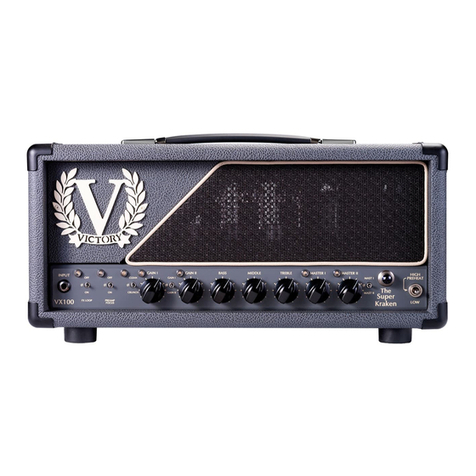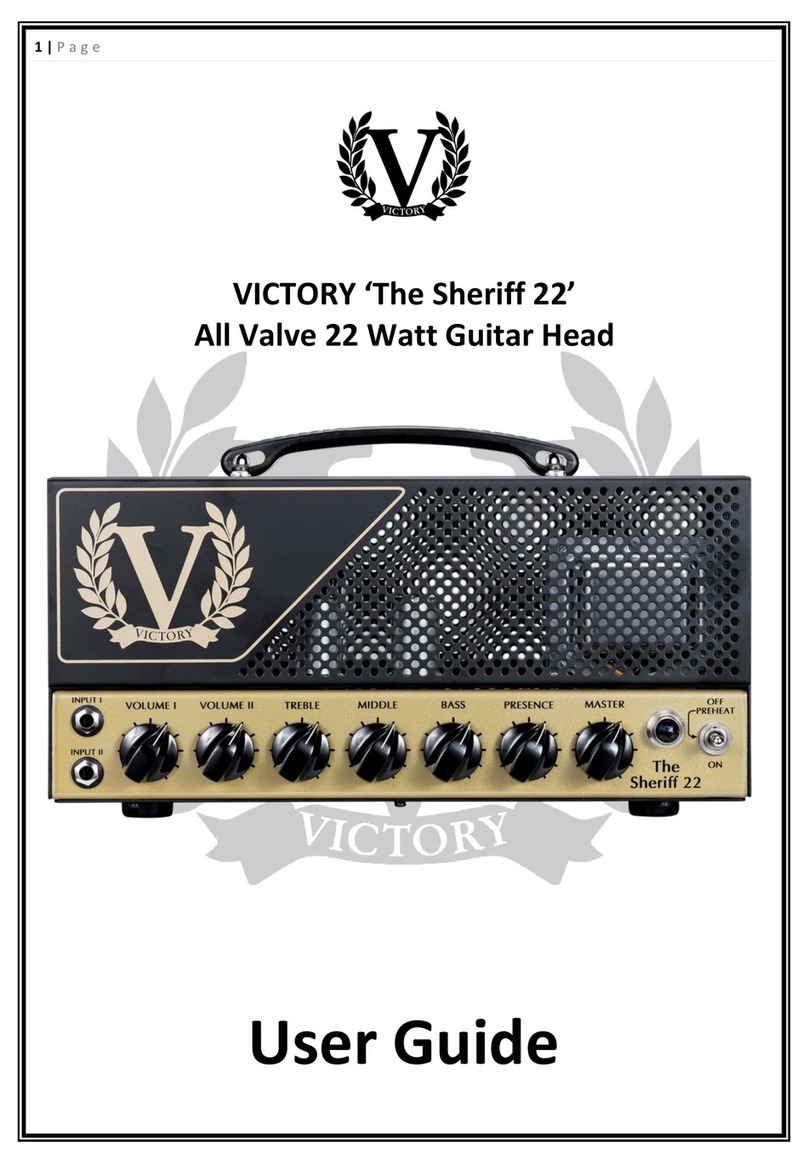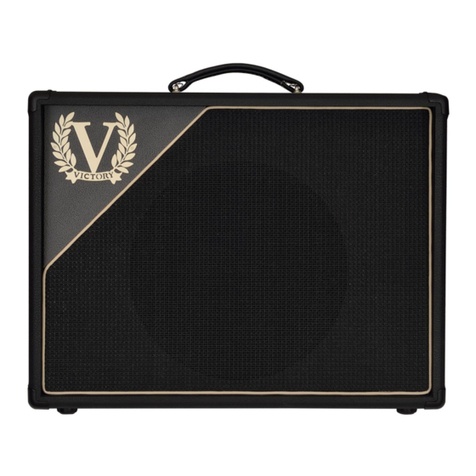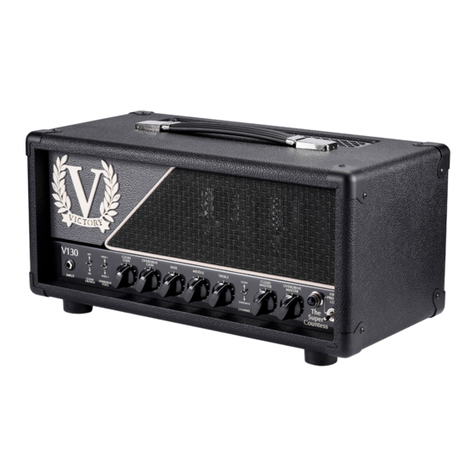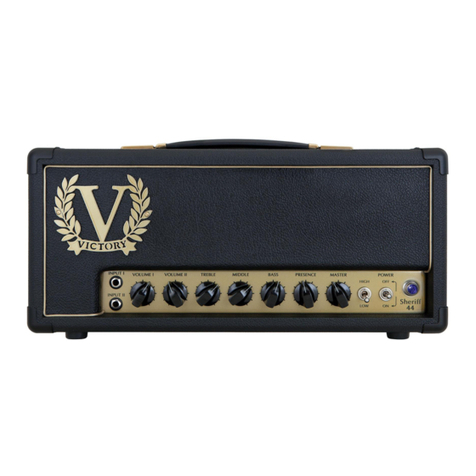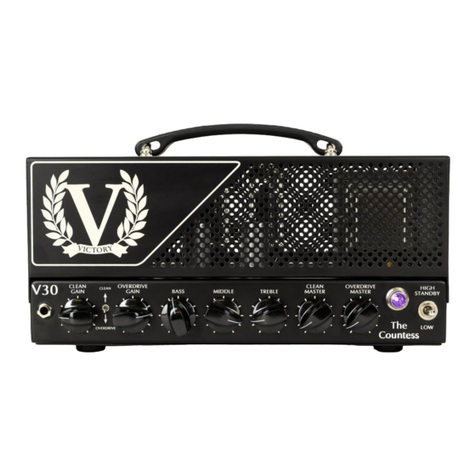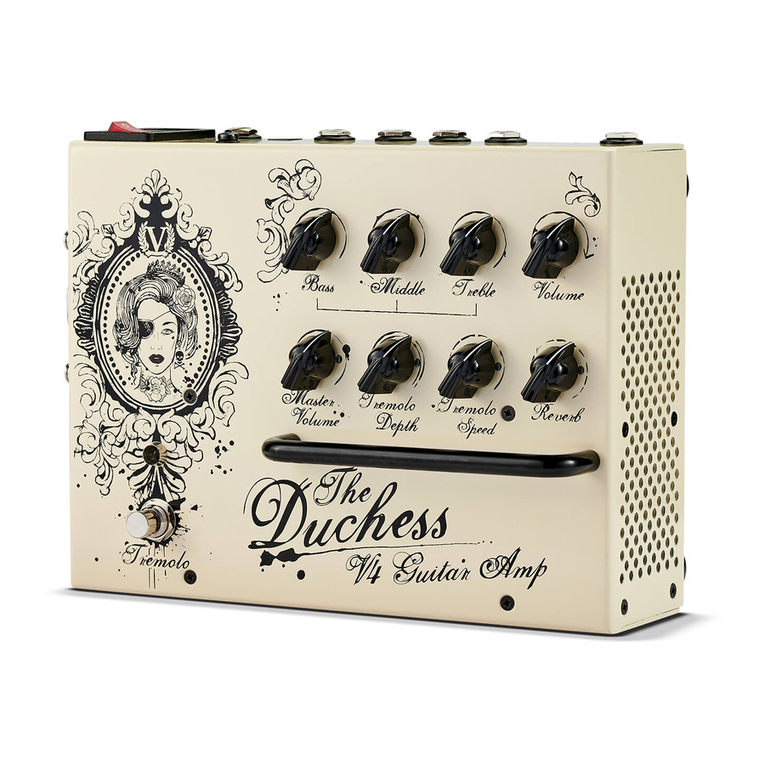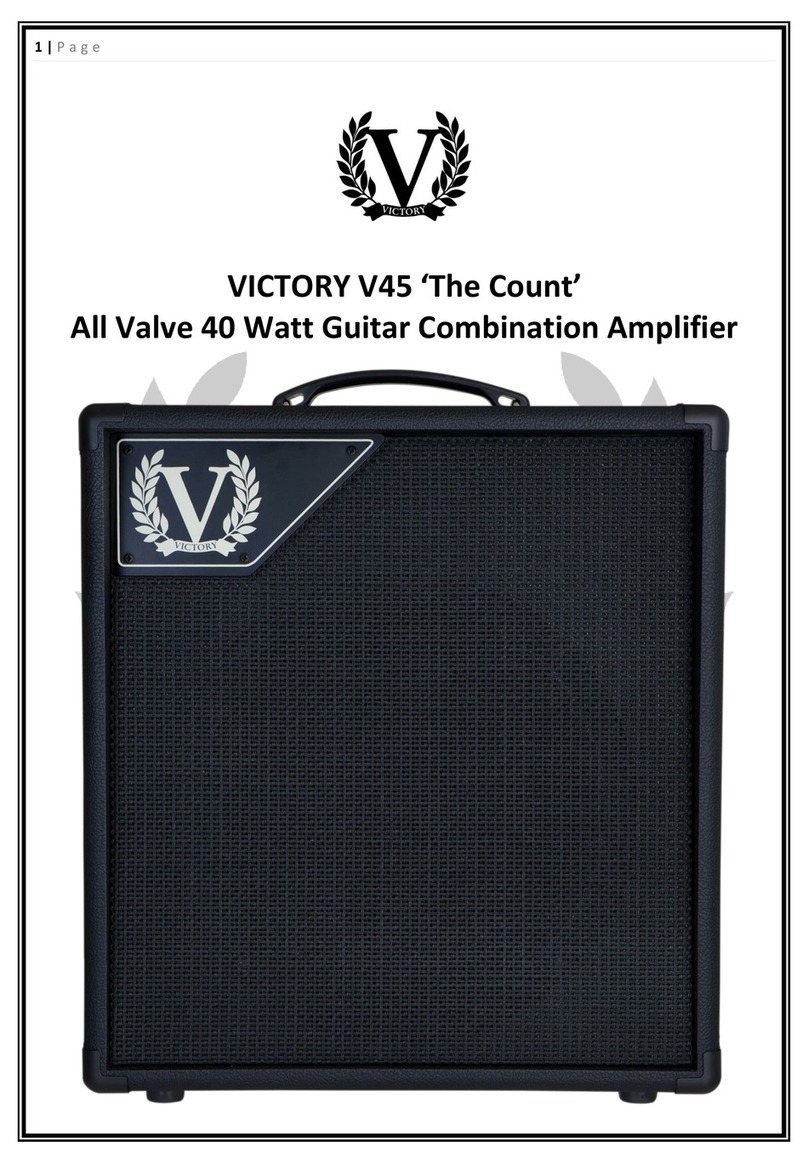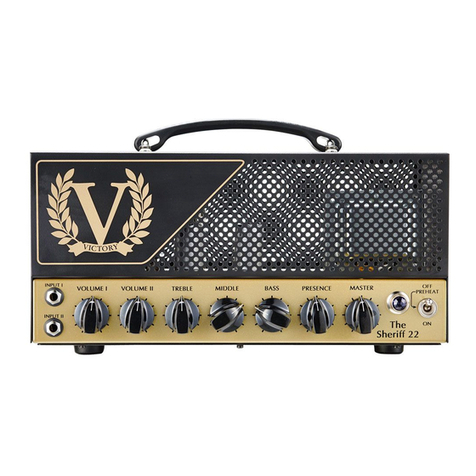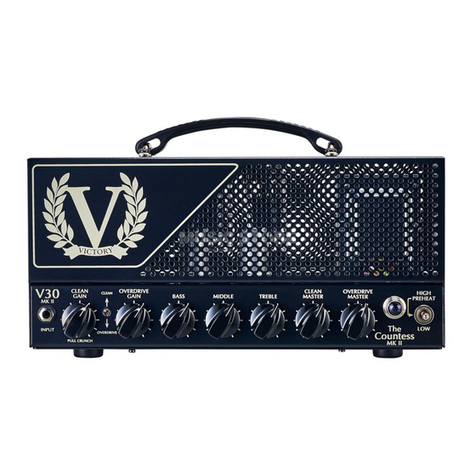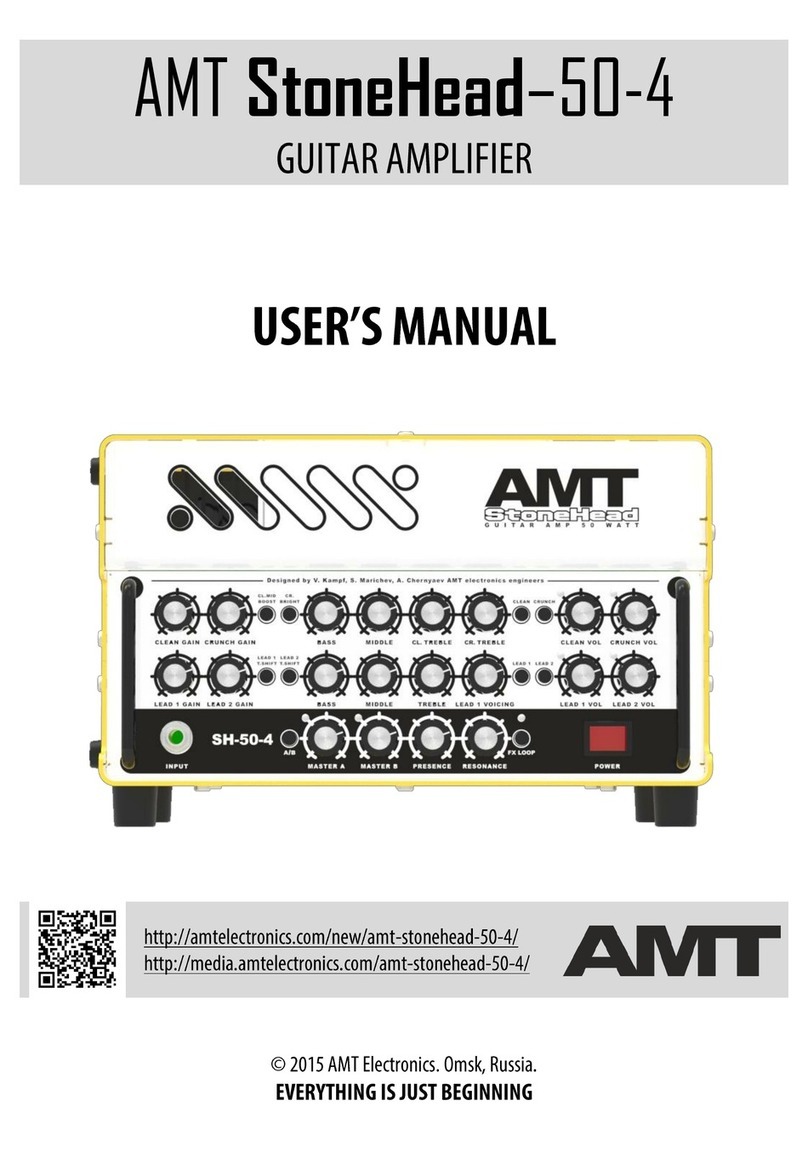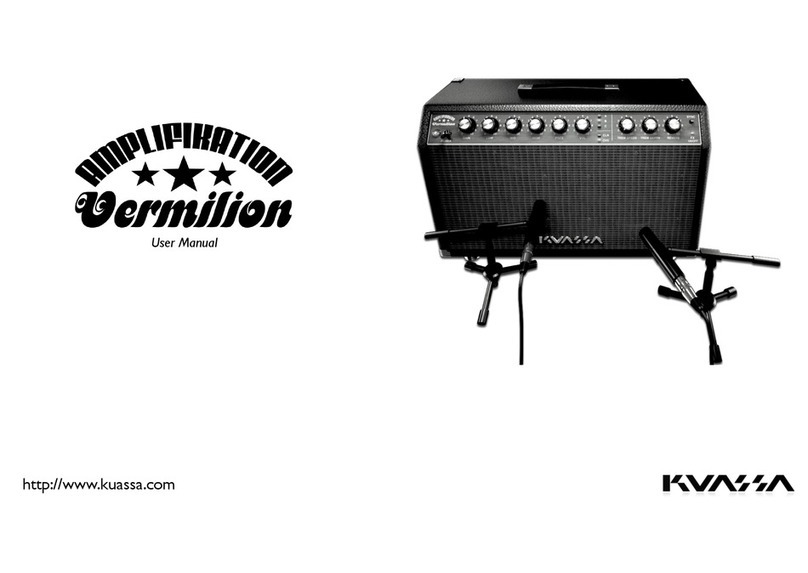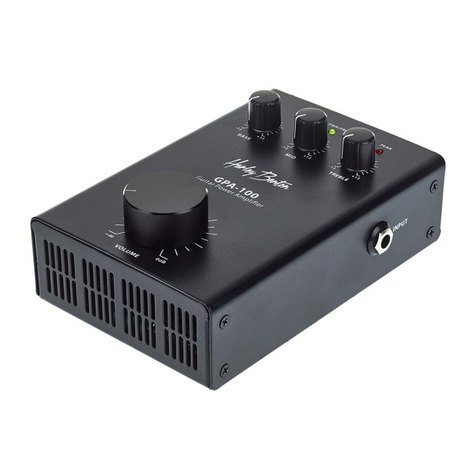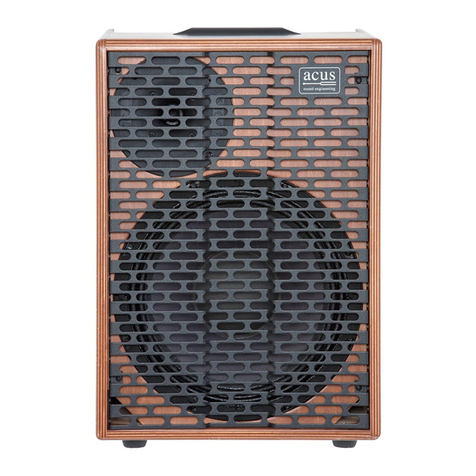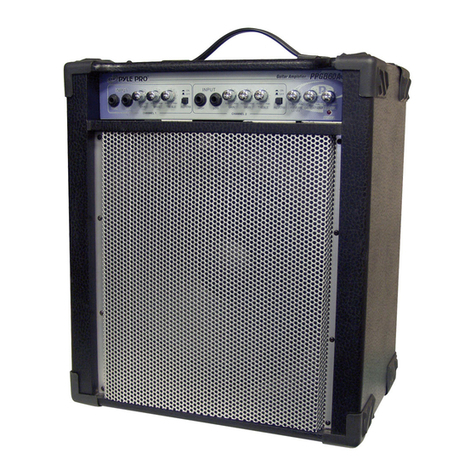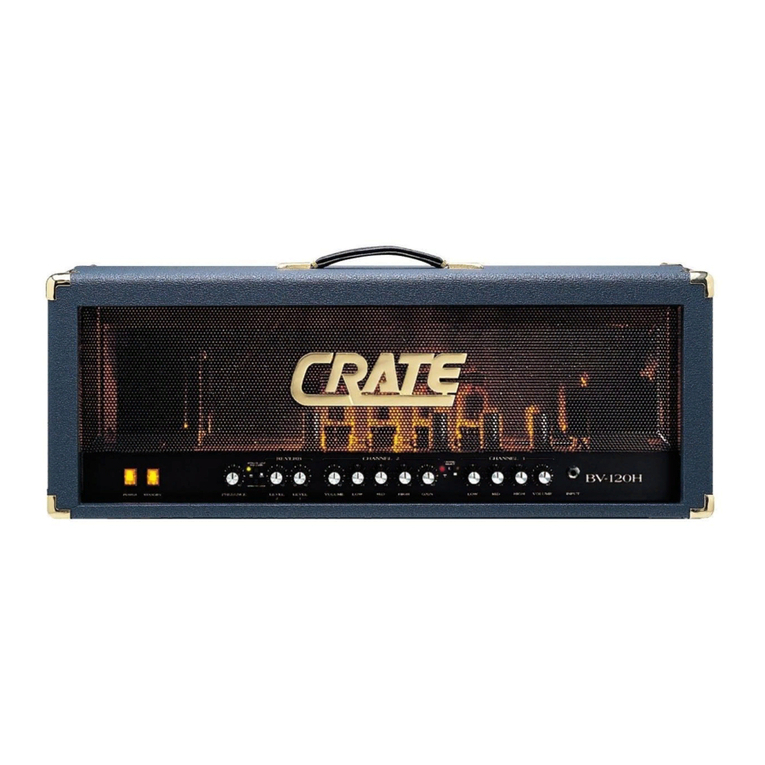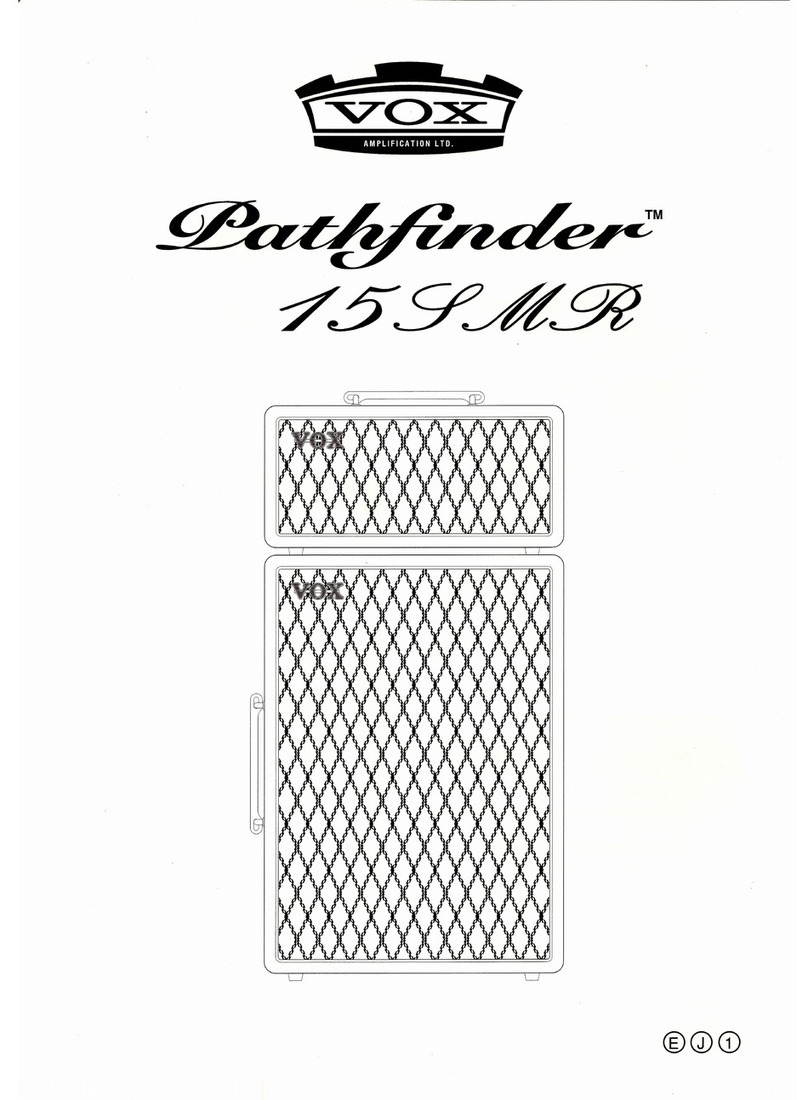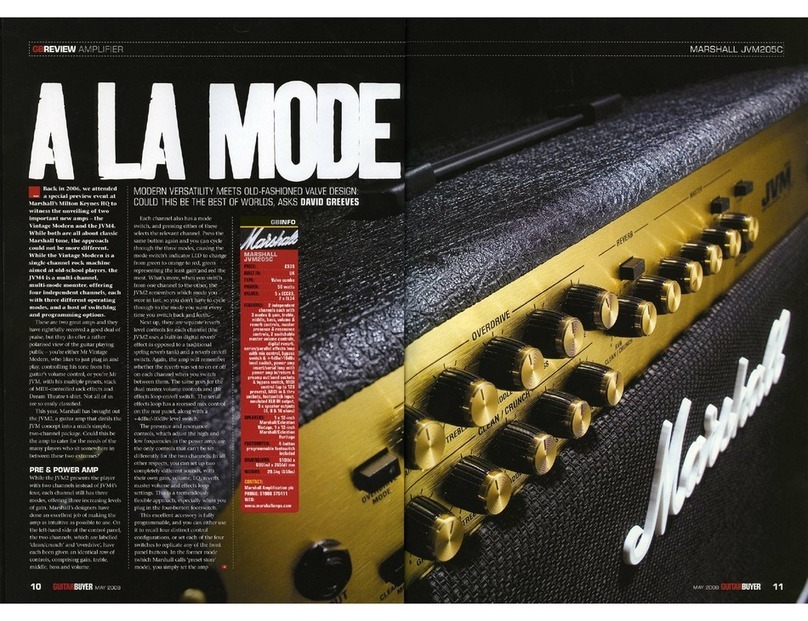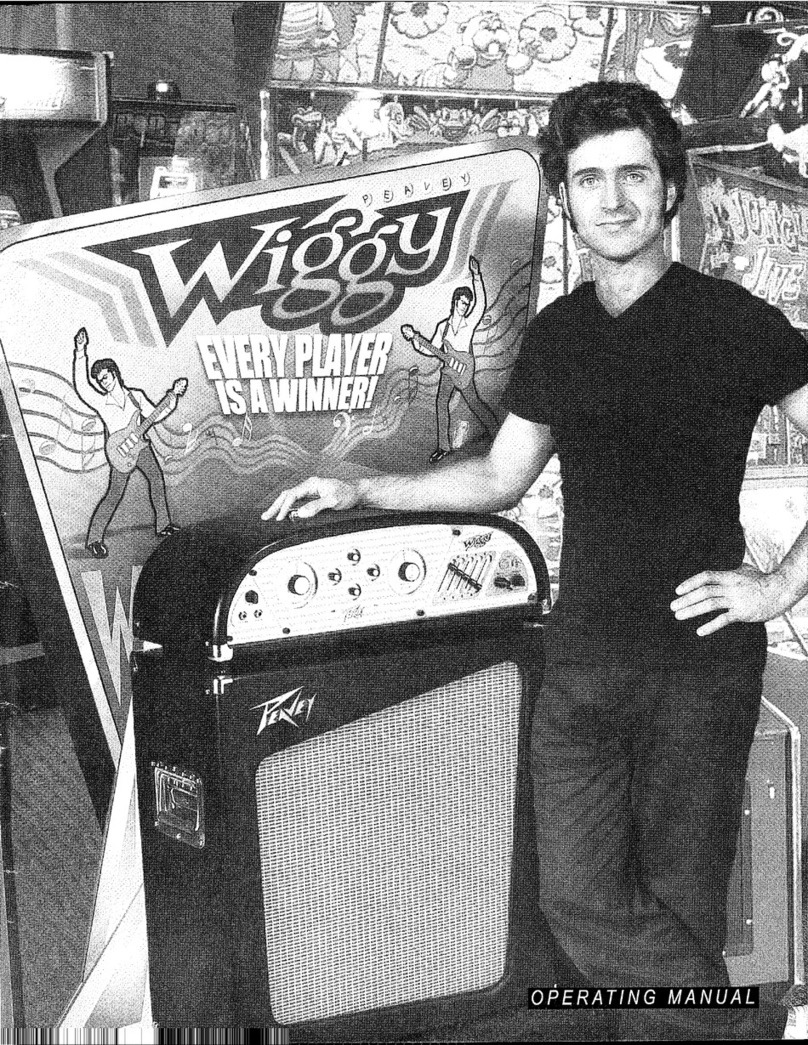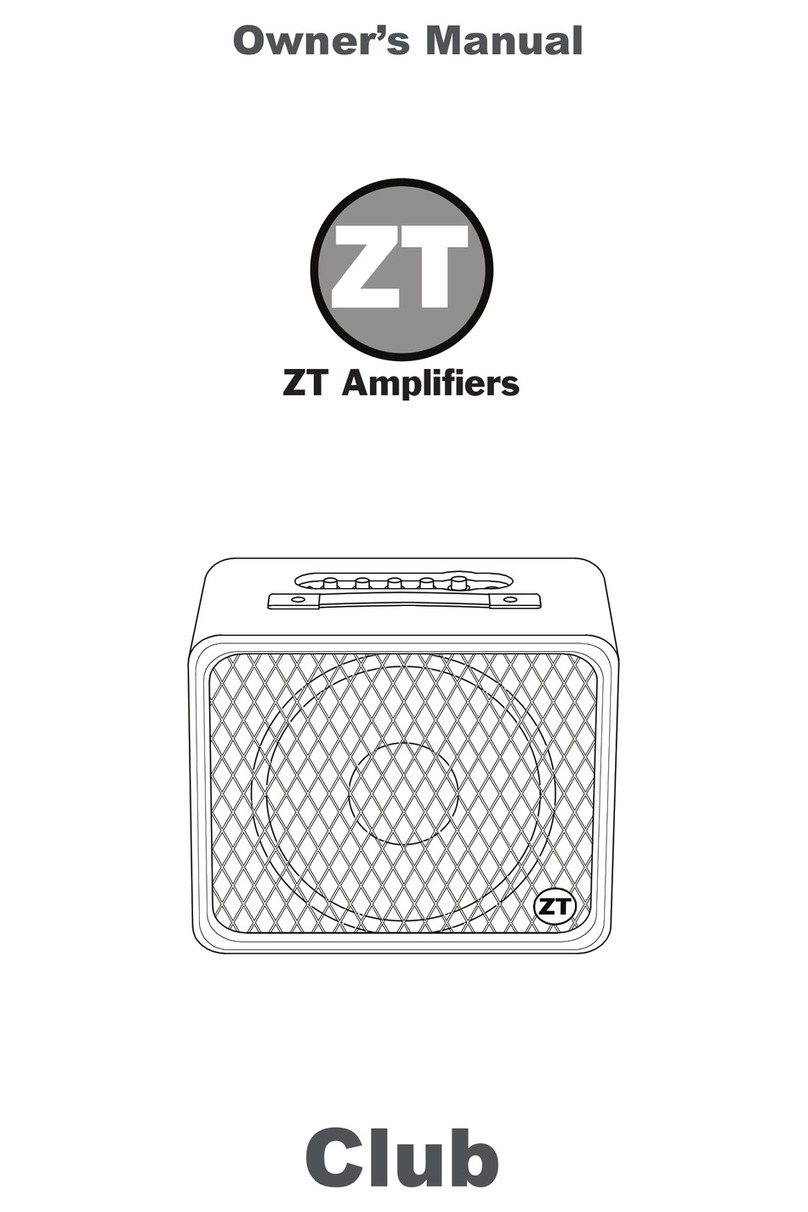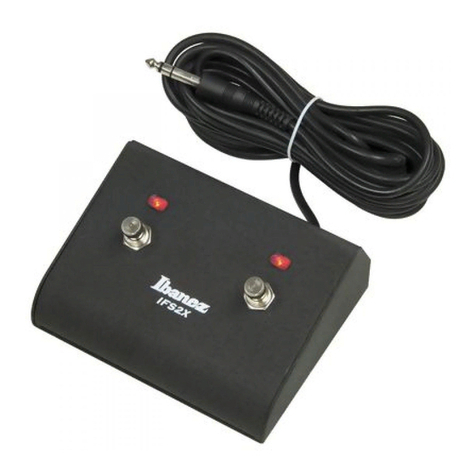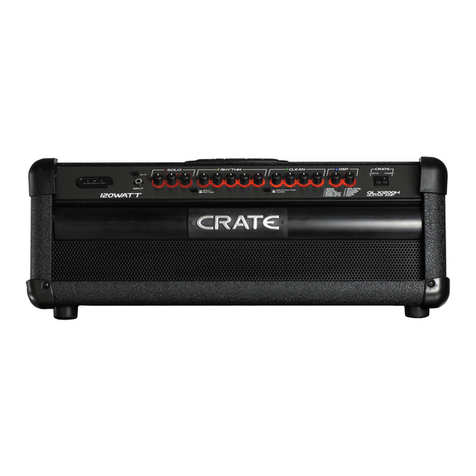6 | P a g e
Always use the correct rating and type of fuse. Victory amplifiers exclusively use UL-
approved 20x5mm glass ‘T’ or ‘Timed’ fuses. If you have difficulty acquiring the correct
fuses, please contact Victory using service@victoryamps.co.uk.
HT FUSE
The HT or ‘High Tension’ fuse protects the high voltage for the valve supply. If this fuse
blows, the first step is to replace it with an identical T1A 20x5mm fuse. The HT fuse may
sometimes blow due to ‘flash-over’ inside an output valve. This is where during the
manufacturing process, not all of the gas is removed from the glass envelope and the
‘getter’ inside the valve, usually made from barium or magnesium oxide, will burn or
evaporate these remaining gasses resulting in the common silvered internal surface of the
valve. This process, which is more likely to happen with new equipment, draws high
current momentarily and can blow the HT fuse. It will rarely cause any damage so just
replacing the fuse is sufficient to get the amp running normally again.
However, if the HT FUSE repeatedly blows, it may indicate a serious valve failure where
internal parts of a valve are shorted and in this case the amplifier needs to be checked by
a qualified engineer to assess the problem.
VERY IMPORTANT WARNINGS!!
In certain countries, (specifically, Nordic countries), is it totally forbidden to open up any
electronic equipment or to work on them at all unless you are a fully qualified and
approved technician. Please check the laws in your country and do not attempt to change
valves/tubes or re-bias the amplifier if the law forbids this. In this case, please take you’re
your amplifier to a qualified and approved electronics technician.
In certain countries it is also totally forbidden to keep or place any liquids on top of the
amplifier, (e.g., beer, water bottles, glass, drinks etc). This may cause serious electric
shocks and/or dangerous situations.
Also, it is totally forbidden to use the amp in the event of rain splatters/water drops
getting into or onto the amp.
Even if it is not a law in your country, you should never allow liquids near the amplifier or
attempt to use the amplifier if it has been subjected to any moisture as this could result
in a fatal electric shock.
Biasing
The Sheriff 100 is a fixed Bias amplifier and requires the output valve idle current to be
pre-set with a variable resistor.
Biasing needs to be done each time the output valves are replaced and should be checked
periodically to make sure they are working at their optimum for sound quality & valve
life. To set the Bias on the VS100, you need a multimeter set to the 200mV DC range. This
is carried out externally so no need to remove the amp from its sleeve. You will however,
need to remove the rear grill to gain access to the valves for replacement. The valves can
